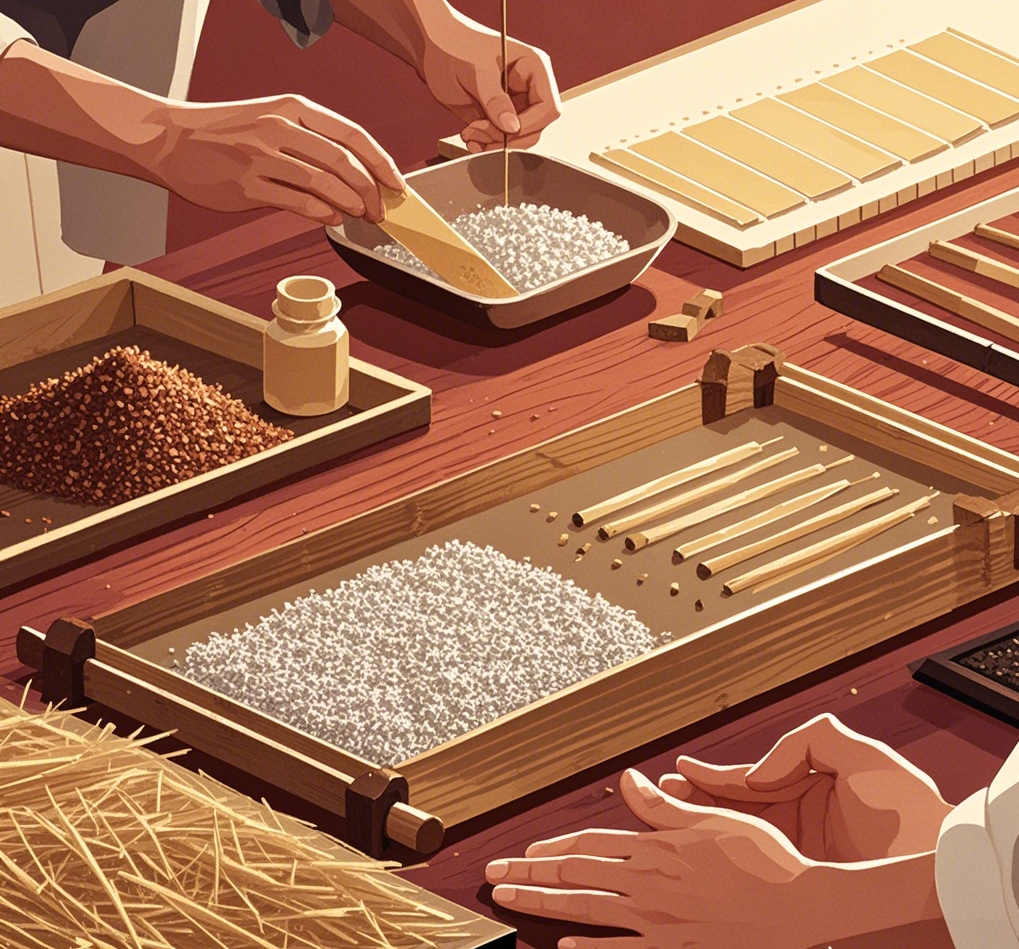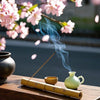중국의 수제 향 제작의 유산과 매력

중국의 수제 향 제작의 유산과 매력
오늘날의 빠르게 움직이는 세상에서 평온함과 휴식의 순간을 찾는 것은 많은 사람들이 추구하는 목표입니다. 일상적인 품목 이상의 수제 향은 전통 문화와 예술의 융합입니다. 풍부한 역사와 장인의 헌신을 구현하여 수공예품의 독특한 매력과 가치를 보여줍니다. 오늘은 중국의 수제 향 공예에 대해 알아보고 그 과정, 기술 및 그것이 나타내는 귀중한 문화 유산을 살펴보겠습니다.

1. 전통적 기초
역사적 기원
- 중국 향의 역사는 수천 년 전으로 거슬러 올라가며, 원래는 종교 의식과 제사 제물에 사용되었습니다. 초기 향은 샌달우드와 정향과 같은 천연 향료로 만들어졌습니다. 장인들은 간단한 도구를 사용하여 이러한 재료를 가루로 갈아서 손으로 막대기 모양으로 만들었습니다. 이 과정의 각 단계는 고대인의 자연에 대한 존중과 향기로운 아름다움에 대한 추구를 반영합니다.

2. 수작업 생산의 복잡한 과정
손으로 향을 만드는 과정에는 세부 사항에 대한 세심한 주의와 기술이 필요하며, 일반적으로 다음 단계를 포함합니다.

(1) 원자재의 선정
- 고품질 향은 향기로운 재료의 신중한 선택으로 시작됩니다. 전통 장인들은 샌달우드, 계피, 정향과 같은 천연 재료를 선택하여 신선함과 순수함을 보장합니다.
(2) 분쇄 및 혼합
- 선택된 재료는 유발과 유봉을 사용하여 미세하게 갈아서 원하는 질감을 얻습니다. 이 단계에서 장인들은 특정 비율에 따라 다양한 향료 분말을 혼합하여 독특한 향 프로필을 만듭니다.
(3) 바인더 추가
- 전통적인 방법에 따라 장인은 가루가 달라붙도록 천연 바인더(찹쌀가루 등)와 물을 추가할 수 있습니다. 이 단계에서 비율과 수분 함량을 제어하는 것은 최종 제품의 품질에 매우 중요합니다.
(4) 형성
- 혼합물을 잘 반죽한 후, 장인들은 혼합물을 손으로 굴리거나 막대기 모양으로 성형합니다. 여기에는 각 막대기의 균일한 두께와 일관된 연소 특성을 보장하기 위한 기술이 필요합니다.
(5) 건조 및 포장
- 모양을 잡은 후, 향은 시원하고 그늘진 곳에서 말려 자연스러운 향과 품질을 유지합니다. 완전히 말린 후, 장인들은 종종 문화적 깊이와 감정적 공명을 전달하기 위해 전통적인 예술적 스타일을 특징으로 하는 포장을 신중하게 디자인합니다.


3. 장인정신과 문화의 교차점
핸드메이드 장인 정신의 가치
- 각각의 핸드메이드 향은 장인의 마음과 영혼의 산물입니다. 제품의 핸드메이드 특성은 재료 선택과 꼼꼼한 생산 과정의 중요성을 강조하며, 장인의 향기에 대한 독특한 이해와 문화 유산에 대한 헌신을 반영합니다. 산업화의 어려움 속에서도 핸드메이드 향은 독특한 향과 천연 재료로 인기를 얻었으며, 그 귀중함과 예술적 가치를 강조합니다.

문화 유산
- 수제 향은 중국에서 상당한 문화적 관련성을 가지고 있습니다. 그것은 향기의 매개체일 뿐만 아니라 감정과 문화적 기억을 담는 그릇이기도 합니다. 많은 시인과 예술가들이 그들의 작품에서 향에 대한 존경심을 표현하여 학자와 문인의 삶에 통합했습니다. 오늘날 전통 문화에 대한 감사가 증가함에 따라 수제 향은 재발견되고 라이프스타일 선택으로 받아들여지고 있습니다.

4. 미래 전망: 전통과 혁신의 융합
지속 가능성에 대한 약속
- 현대 사회에서는 수제 향 생산에서 지속 가능성에 대한 강조가 커지고 있습니다. 많은 장인들이 이제 소비자의 건강과 환경적 우려를 충족하기 위해 유기농 재료와 친환경 포장을 선택하고 있습니다. 이러한 접근 방식은 전통에 대한 찬사일 뿐만 아니라 미래에 대한 책임이기도 합니다.
유산과 혁신의 결합
- 앞으로, 핸드메이드 향의 기술은 전통과 현대성 사이의 균형을 계속 추구할 것입니다. 장인들은 전통적인 기술을 보존하는 동시에 새로운 아로마 조합과 혁신적인 방법을 탐구하여 현대적 취향과 요구에 공감하는 제품을 만들 것입니다.

중국의 수제 향 제작 기술은 전통, 장인 정신, 문화를 함께 엮어내는 아름다운 여정입니다. 각 향은 장인의 헌신을 나타내며 풍부한 역사와 감정을 담고 있습니다. 우리의 빠른 삶에서 수제 향은 고요한 향을 제공할 뿐만 아니라 전통 문화의 매력과 가치와 다시 연결해줍니다. 수제 향을 지원하고 홍보함으로써 우리는 이 귀중한 기술을 공동으로 보존하고 미래 세대를 위한 중요성을 되살릴 수 있습니다.

-
게시됨
History, Incense, Incense legacy, Material






